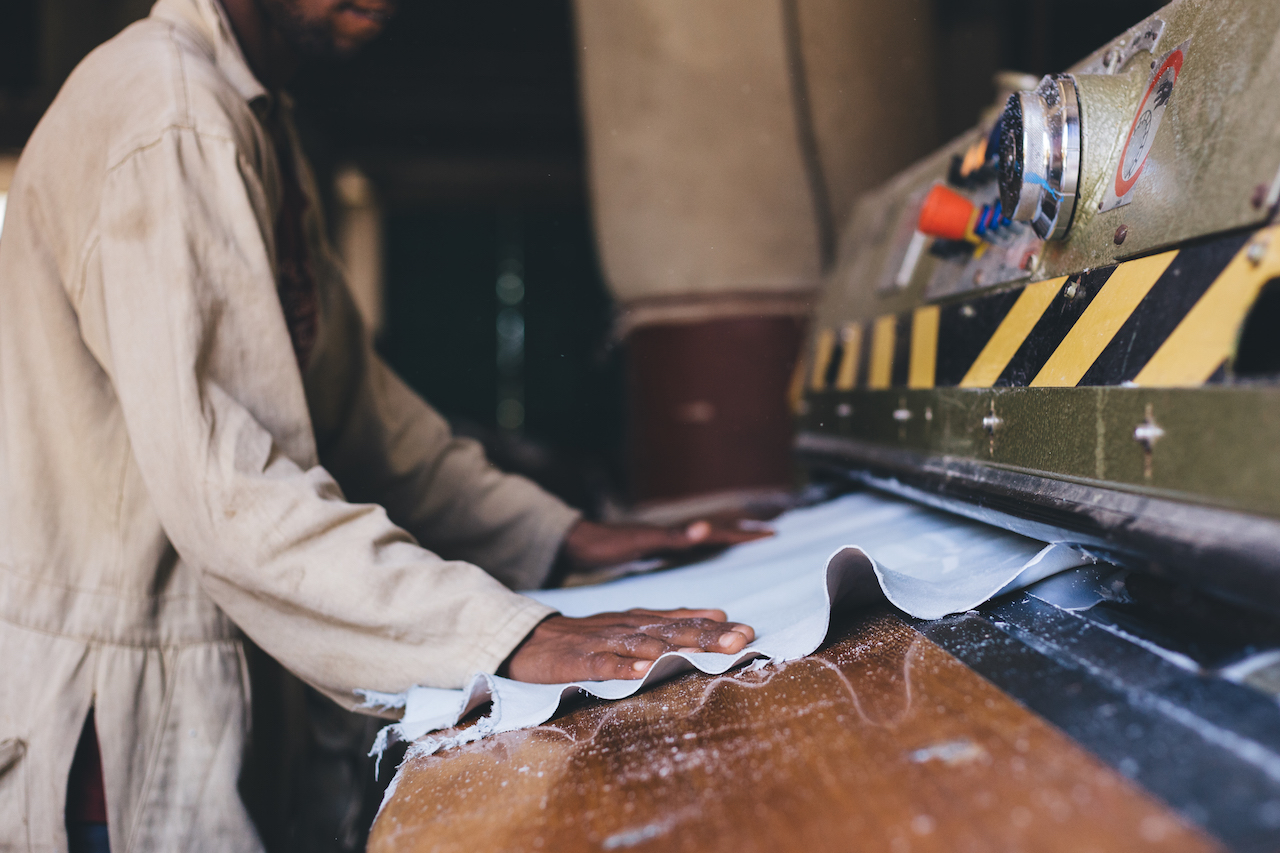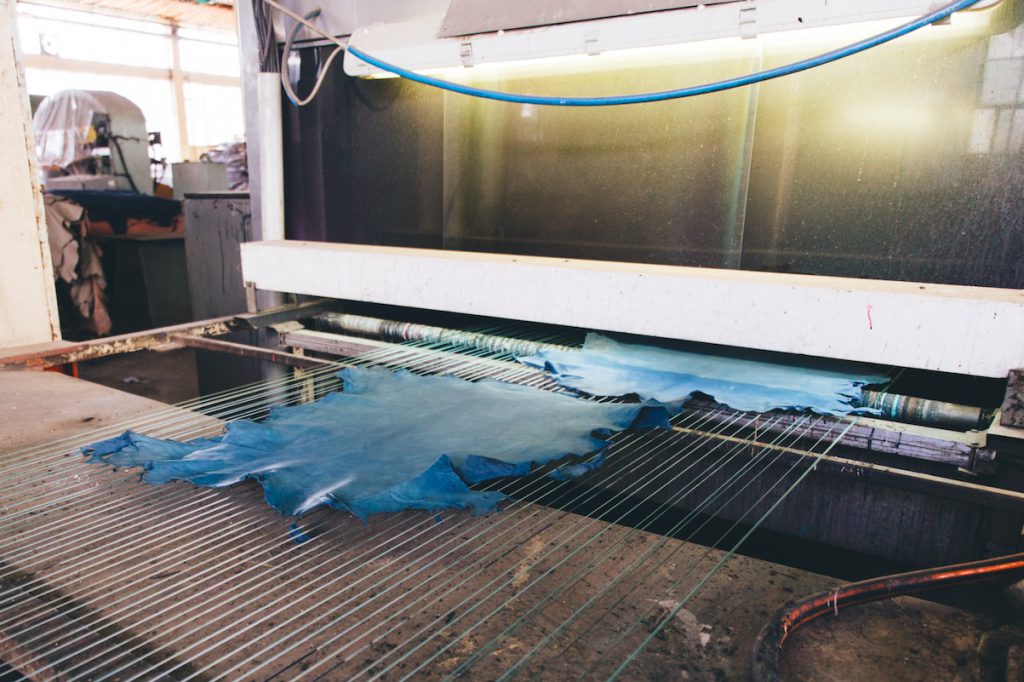Great care is taken to ensure HAFDE’s leathers are high-quality and long-lasting. The production process goes through 5 mains stages: soaking and liming, pickling, tanning, re tanning and finishing.
a) Pre tanning operations
The hides, sourced locally from Ethiopia, are first subject to quality control assessments. Hides that meet the requirements are placed into the liming drums and soaked to remove impurities, un-haired, and limed to open the leather fibres. The limed hides are subsequently released from the drums and fleshed to remove all fats and tissues, before a manual trimming and splitting process occurs. Hides are then going through the following steps: de-liming (to reduce hide swelling), maceration (to ensure the hides are clean), pickle (to facilitate tanning actions and to prevent decay and maintain their properties). The product of this stage is called “ pickled pelt ”.
b) Tanning
There are three main methods of tanning:
- Chrome tanning: chromium salts are added after pickling. The process of chromium tanning is based on the cross-linkage of chromium ions with free carboxyl groups in the collagen. It makes the hide resistant to bacteria and high temperature. The product of this stage is called “ wet blue leather ”.
- Vegetable tanning: The transformation from raw hides into a material that will last a long time is a process that happens slowly in wooden drums while respecting the environment. It is an astonishing process based on the use of natural tannins, on modern technologies and machinery but mainly, on the slow passage of time.
- Chrome free tanning (link it to the section on green tanning)
Following this, the tanned hides are pressed, split, and shaved to smooth the hides and ensure uniform thickness.
c) Retanning
The hides are re-tanned to maintain their physical properties and dyed in a range of colours or tie-dye patterns. Fat-liquoring occurs to add softness to the leathers depending on the desired outcome. The product of this stage is called “ crust leather”.
d) Finishing
Once dyed, the hides are air dried; they are suspended on a metal rack and rotated around the ceiling on the inside of the tannery.
Several finishing treatments are undertaken to modify the final appearance and characteristics of the dried leathers. These operations include buffing, finishing, embossing, milling and ironing, each affecting the feel, softness and colour of the leathers. Lastly, these are subject to rigorous checks to ensure they are of high quality and suitable for the client’s needs. The product of this stage is called finished leather.





